Correcting hyperlordosis patterns in 3 common exercises along with some EXCELLENT videos by Eric Cressey and Carl Paoli explaining correct technique on all three.

Lumbar hyperlordosis is an exaggerated curve of the lumbar spine which could potentially cause severe stress on the lower back when performing certain movement patterns and weight bearing exercises. The lumbar spine needs a natural lordodic curve to function properly. However if this lordodic curve becomes to extreme the imbalance will create a dysfunction and place unnecessary stress on your muscles and joints.
We constantly see trainers yelling at their clients to “arch!” or “keep a neutral spine” who are well aware of the dangers of spinal flexion when under heavy stress. However, we rarely see trainers pick up on excessive lordosis when performing other movements.
It is extremely important that we start becoming more aware of the affects of hyperlordosis. When we fall into this pattern, our lower back muscles and hip flexors will shorten and our hamstrings and abdominal wall will become elongated, setting us up for faulty movement patterns, muscle imbalances and dysfunction.
Today I will give you 3 common exercises we see performed in the gym where clients tend to fall victim to hyperlordosis. All 3 are excellent movements and are staples of any well rounded strength and conditioning program. However, we rarely see them done properly.
Chin Up / Pull Up
[youtube=http://www.youtube.com/watch?v=Kvm7q7t_AMc]
Chin Ups, in my opinion are the ultimate test of fitness and relative strength. They have laid claims to bragging rights for eons. However, way to many people sacrifice form for more reps. The chin up is a self limiting exercise.
When the going gets tough, people will contort their bodies in ways unimaginable just to get their chin to the bar. The most instinctual thing to do is cross the feet and bend the knees so that the legs are hanging behind. By doing this, it gives us a little more momentum to swing ourselves up to the bar.
Unfortunately, it sets us up for bad lumbar hyperextension and forward head posture. This will also cause us to lose the ability to engage the glutes and anterior core. You have to balance risk with reward here. Start doing chin ups with your legs straight down from now on. You may not be able to perform as many reps, but you will become stronger in the long run by utilizing more core muscles as well as preventing injury.
Ab Wheel Roll Outs
[youtube=http://www.youtube.com/watch?v=Gg4o745td04]
The roll out is a great anti-extension exercise that is great for improving the strength and stability of the anterior core and lumbar region. However, they are tough. Real tough. Most people are unable to hold the lumbar stability it takes to perform them correctly. They end up rolling or “falling” into lumbar hyperextension, which makes the exercise useless. Next time you perform this movement, try starting in more of a posterior lumbar tilt and squeeze your glutes at the top. When you roll out, this will bring your lumbar spine into more of a neutral position instead of into hyperextension.
Cable Rows / Dumbbell Rows
[youtube=http://www.youtube.com/watch?v=uGsSDdKfINo]
When we perform any sort of rowing exercise we usually hear the cue, “chest up” or “shoulder blades back”. While this is fine, we might actually be sacrificing one thing for another. What happens is the individual or athlete will pull up into a hyperextended lumbar position.
For individuals who already live in hyperlordosis, this something we want to avoid. The Lats will shorten and stay overactive and the ribs will flare up causing more dysfunction through the kinetic chain.
The next time you do seated or standing rows, re-establish a good neutral posture, set your core, squeeze your glutes and be aware of how much lumbar extension you are in. You will be surprised at how this position carries over to many other movements you perform.
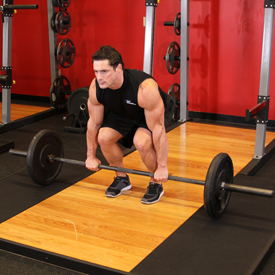
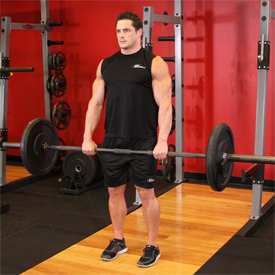 The deadlift is arguably the king of all exercises in the gym. Not only does it target the glutes and hamstrings, but it involves more core muscles than most core exercises including the squat! It's also a superior posterior movement. In laymens terms, the deadlift is a great exercise to counterbalance the debilitating effects of sitting which tightens up our anterior, more specifically the hips and shoulders. So without further adieu, here's a step by step description on performing a proper deadlift:
First, stand in front of a loaded barbell.
While keeping your back as straight as possible, bend your knees, bend forward and grasp the bar using a medium (shoulder width) overhand grip. This will be the starting position of the exercise.
Tip: If it is difficult to hold on to the bar with this grip, alternate your grip or use wrist straps.
Second, while holding the bar, start the lift by pushing with your legs while simultaneously getting your torso to the upright position as you breathe out. In the upright position, stick your chest out and contract the back by bringing the shoulder blades back. Think of how the soldiers in the military look when they are standing in attention.
Then, return back to the starting position by bending at the knees while simultaneously leaning the torso forward at the waist while keeping your back straight. When the weights on the bar touch the floor you are back at the starting position and ready to perform another repetition.
Remember, this is not an exercise to be taken lightly. If you have back issues, substitute it for some hip bridges and work up to it with exercises that retract your back and stabilize your spine...like a row or a plank for example.
If you have a healthy back, be strict with your form, and do not round your back as this can cause injury. Be cautious as well with the weight used; in case of doubt, use less weight rather than more.
You can also perform deadlifts with dumbbells, kettlebells or a trap bar which may be safer options to start out until you've mastered form.
The deadlift is arguably the king of all exercises in the gym. Not only does it target the glutes and hamstrings, but it involves more core muscles than most core exercises including the squat! It's also a superior posterior movement. In laymens terms, the deadlift is a great exercise to counterbalance the debilitating effects of sitting which tightens up our anterior, more specifically the hips and shoulders. So without further adieu, here's a step by step description on performing a proper deadlift:
First, stand in front of a loaded barbell.
While keeping your back as straight as possible, bend your knees, bend forward and grasp the bar using a medium (shoulder width) overhand grip. This will be the starting position of the exercise.
Tip: If it is difficult to hold on to the bar with this grip, alternate your grip or use wrist straps.
Second, while holding the bar, start the lift by pushing with your legs while simultaneously getting your torso to the upright position as you breathe out. In the upright position, stick your chest out and contract the back by bringing the shoulder blades back. Think of how the soldiers in the military look when they are standing in attention.
Then, return back to the starting position by bending at the knees while simultaneously leaning the torso forward at the waist while keeping your back straight. When the weights on the bar touch the floor you are back at the starting position and ready to perform another repetition.
Remember, this is not an exercise to be taken lightly. If you have back issues, substitute it for some hip bridges and work up to it with exercises that retract your back and stabilize your spine...like a row or a plank for example.
If you have a healthy back, be strict with your form, and do not round your back as this can cause injury. Be cautious as well with the weight used; in case of doubt, use less weight rather than more.
You can also perform deadlifts with dumbbells, kettlebells or a trap bar which may be safer options to start out until you've mastered form.

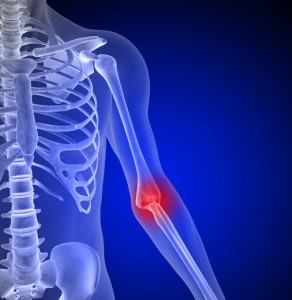
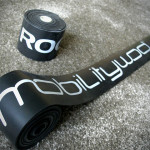 I didn’t even look at a barbell for probably 3 weeks. For the first week, the only thing I did was focus on soft tissue regeneration. For 20 minutes a day I worked on self-myofascial release with the use of a lacrosse ball, foam roller and a voodoo band. If you don’t know what a voodoo band is please go to
I didn’t even look at a barbell for probably 3 weeks. For the first week, the only thing I did was focus on soft tissue regeneration. For 20 minutes a day I worked on self-myofascial release with the use of a lacrosse ball, foam roller and a voodoo band. If you don’t know what a voodoo band is please go to 
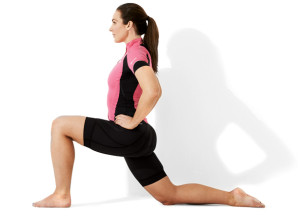

 Plan your “off days” and de-load weeks into your program to help with restoration and recovery. De-load weeks are short periods of lower volume and lower intensity. Learn how to properly implement self-myofascial release (SMR) and dynamic warm-ups into your training program.
These techniques can help improve blood flow into the working tissue thereby accelerating recovery.
In summary:
Plan your “off days” and de-load weeks into your program to help with restoration and recovery. De-load weeks are short periods of lower volume and lower intensity. Learn how to properly implement self-myofascial release (SMR) and dynamic warm-ups into your training program.
These techniques can help improve blood flow into the working tissue thereby accelerating recovery.
In summary:





